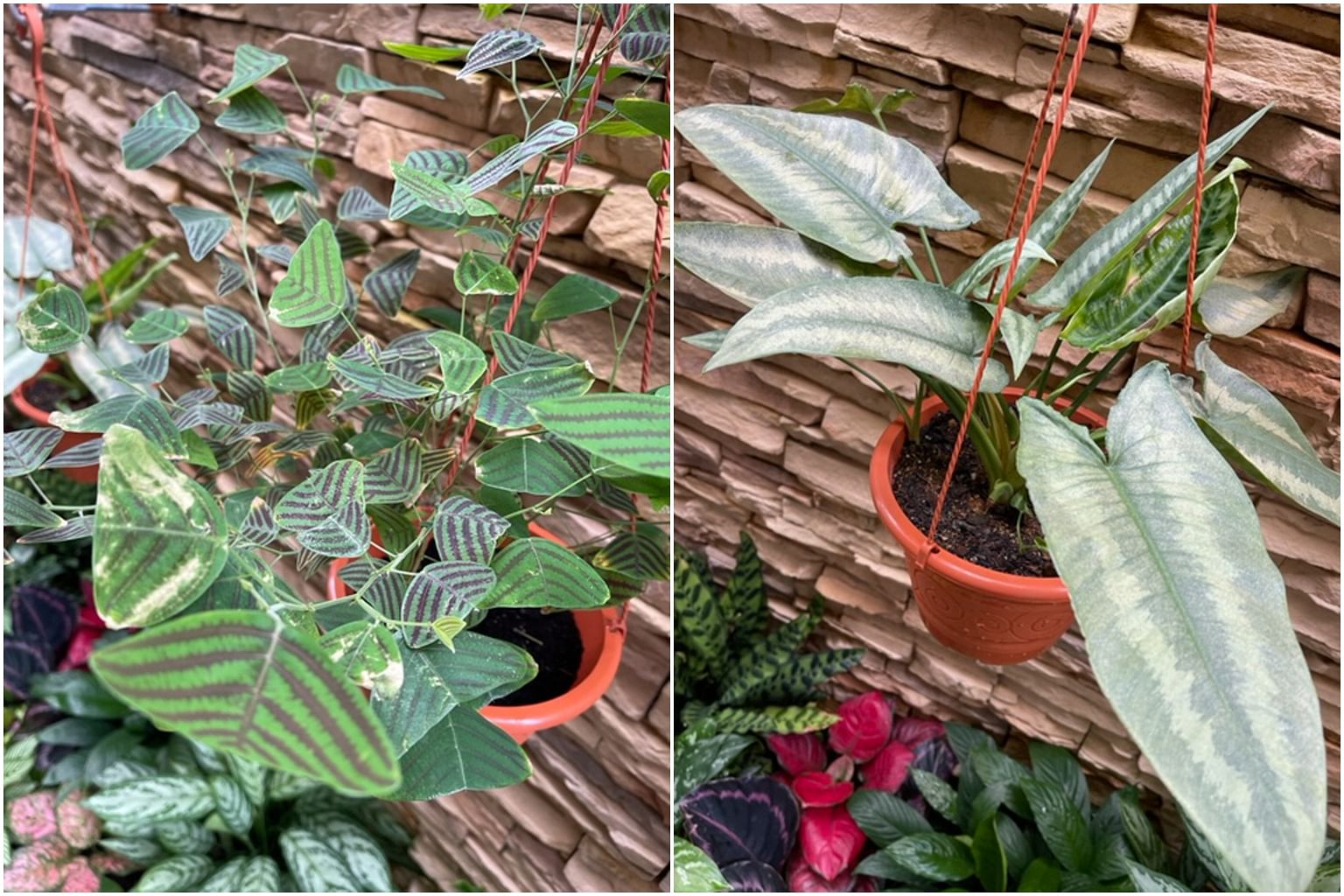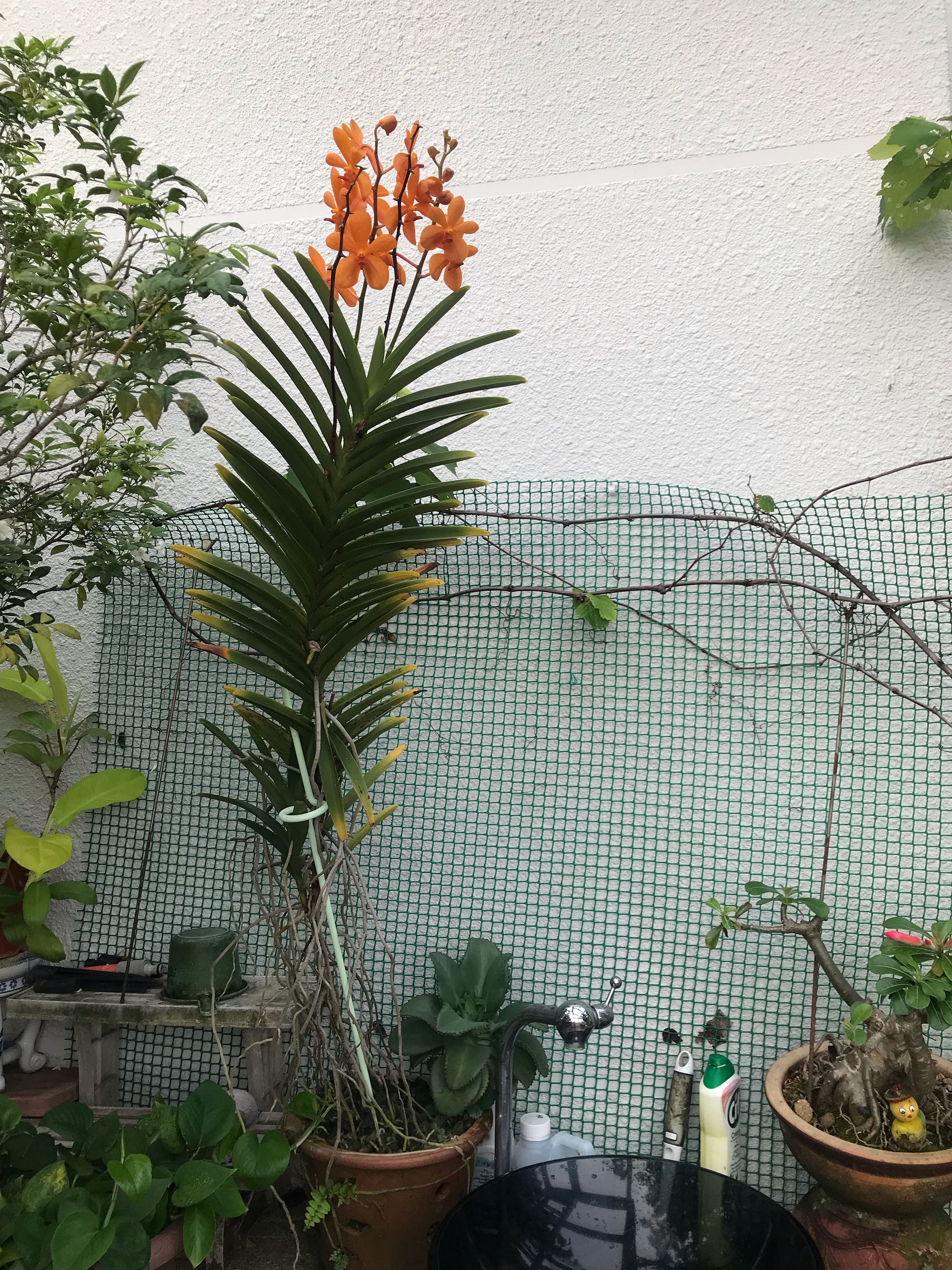Sooty mould on pomelo leaves due to sucking pest infestation
I have been growing this pomelo plant from seeds for several years. The underside of the leaves has a white layer and some leaves have a black layer as well. I have been pruning the affected leaves, but the problem seems to be getting worse. What is causing the white and black layers and how do I remove them? The plant's leaves also attract many caterpillars - how can I prevent this?
Lyn Tan
The black patches on your plant could be due to sooty mould. This fungus grows on the sugary excrement of sucking insects and, when it covers large sections of the leaves, can reduce the photosynthetic capacity of the plant.
These patches can be removed, with some effort, using a dilute solution of soapy water and gently rubbing the affected leaves between fingers.
Sucking insects that might affect woody plants include scale insects, mealy bugs, aphids and whiteflies. Check for their presence and take appropriate action by applying low-toxicity pesticides like pyrethrins, castile soap solution and summer oil. Rotate the pesticides and apply them at regular intervals to manage the pests' populations.
The white spots on the underside of leaves could be a past infestation of whiteflies.
The caterpillars could be those of the lime and common Mormon butterflies. Instead of killing them, you can rear them or give them to schools to teach students about the life cycles of insects.
To rear caterpillars sustainably yet not affect your plant, keep them in a tank where you ration their food by feeding them plucked leaves.
Caterpillars can be managed by spraying the plant with Dipel, which is a pesticide based on Bacillus thuringiensis subspecies kurstaki. The pesticide needs to be sprayed preventively and is more effective on young caterpillars. Reapplication is required as the insecticide is washed away by heavy rain.
Young chlorotic leaves due to nutrient deficiency

Some of my potted citrus plants have very pale green leaves mixed with leaves with dark green veins and others that are totally pale green. Is it a sign of magnesium or iron deficiency? How can I rectify this?
Sabrina Png
The appearance of chlorosis on new leaves indicates a micronutrient deficiency. One of the most common deficiencies is that of iron.
Check that the growing media is not overly compacted and waterlogged. These conditions prevent the development of a healthy root system that is needed for nutrient uptake. Improve your soil by adding good quality organic matter and coarse gritty materials to permit aeration and drainage.
Next, check that the soil pH level is neither too acidic or alkaline - such conditions prevent iron and other nutrients from being absorbed by plants. Sulphur powder and garden lime can be added to reduce or increase the soil's pH level respectively. While these take time to act, a gradual rather than a drastic change is desired.
Check light requirements to help plants thrive

I bought these plants recently, but I do not know their names. The leaves of the first plant seem to have turned yellow at the edges, while the colour of those of the second plant seems to be fading. What is the cause of this and how can I remedy the problem?
Victor Chua
The plant with butterfly-like leaves is botanically called Christia obcordata. Its common names include Butterfly Plant and Swallowtail Plant.
The fading of the lower leaves could be due to a lack of light. The plant prefers a location with at least four hours of filtered sunlight.
The yellowing of lower leaves could also be due to a lack of nutrients because of overly wet or dry soil. Ensure the plant is well-watered and let it dry out slightly between each watering. You may also need to move the plant to a larger container if it is pot-bound. Fertilise promptly to support the rate of plant growth.
The plant with spade-shaped leaves is botanically known as Schismatoglottis wallichii. It is a member of the yam family, Araceae, and is generally grown in a shaded location and appreciated for its attractive leaves.
If this plant is grown in too bright an area, the leaves will be bleached. It is better to grow it in a moist, humid yet shaded site with at least four hours of filtered sunlight.
Check if there are small white spots on its leaves as that may indicate a spider mite infestation - a common issue if the plant is grown in a hot and dry spot.
Wiping the leaves with soapy water is a way to remove the pests which appear as small red dots that move around the leaf's surface.
Moth orchid may be rotting due to wet feet

I bought this before Chinese New Year and, in about a month, the plant became like this despite my taking care of it. What should I do now? Can the plant be salvaged and how do I take care of it correctly?
Serene Teng
The yellowing leaves of your moth orchid (Phalaenopsis hybrid) may indicate that the plant is rotting.
Take the plant out and check if the crown is soft and mushy. This often happens as such orchids are potted in sphagnum moss, which holds a lot of moisture. If they are not allowed to dry out, the roots and crown of the plants rot. Affected plants are difficult to nurse back to health and often die.
You can take the plant out and remove the sphagnum moss around the roots. Prune dried inflorescences and rotting or dead roots.
Then pot the orchids in charcoal chunks or mount them on a fern bark - there are many do-it-yourself videos on the Internet that you can refer to. Such growing methods allow the roots to be exposed and dry out so that they do not rot that easily.
Do not plant the orchid too deeply as this will cause the plant to rot.
When grown this way, moth orchids need to be watered regularly, depending on the growing environment, to ensure they do not dry out excessively. Ensure they are grown in a location with good air circulation and get filtered sunlight for at least four hours daily. Feed plants with a water-soluble fertiliser for orchids. Such hybrids usually bloom only during the cooler parts of the year in Singapore.
Monopodial orchid can be propagated via stem cutting

I have had this orchid for the last 18 years and it has grown very tall. I wish to cut and propagate it. How do I do so?
Ong Tin Tin
The orchid has a monopodial growth habit. You can cut the top part and grow it separately. The cut section should have several roots.
As the top portion is quite large, you need to pot it in a clay container and add a stake to give the plant additional support. Otherwise, the plant will topple easily.
As the plant is an epiphytic orchid, pot the stem cutting with some coarse charcoal chunks to permit aeration and drainage. Do not plant the cutting too deeply as this will cause the plant to rot. The leaves should be ideally above the charcoal chunks.
- Answers by Dr Wilson Wong, an NParks-certified practising horticulturist, parks manager and ISA-certified arborist. He is the founder of Green Culture Singapore and an adjunct assistant professor (Food Science & Technology) at the National University of Singapore.
- Have a gardening query? E-mail it with clear, high-resolution pictures of at least 1MB, if any, and your full name to stlife@sph.com.sg. We reserve the right to edit and reject questions.

